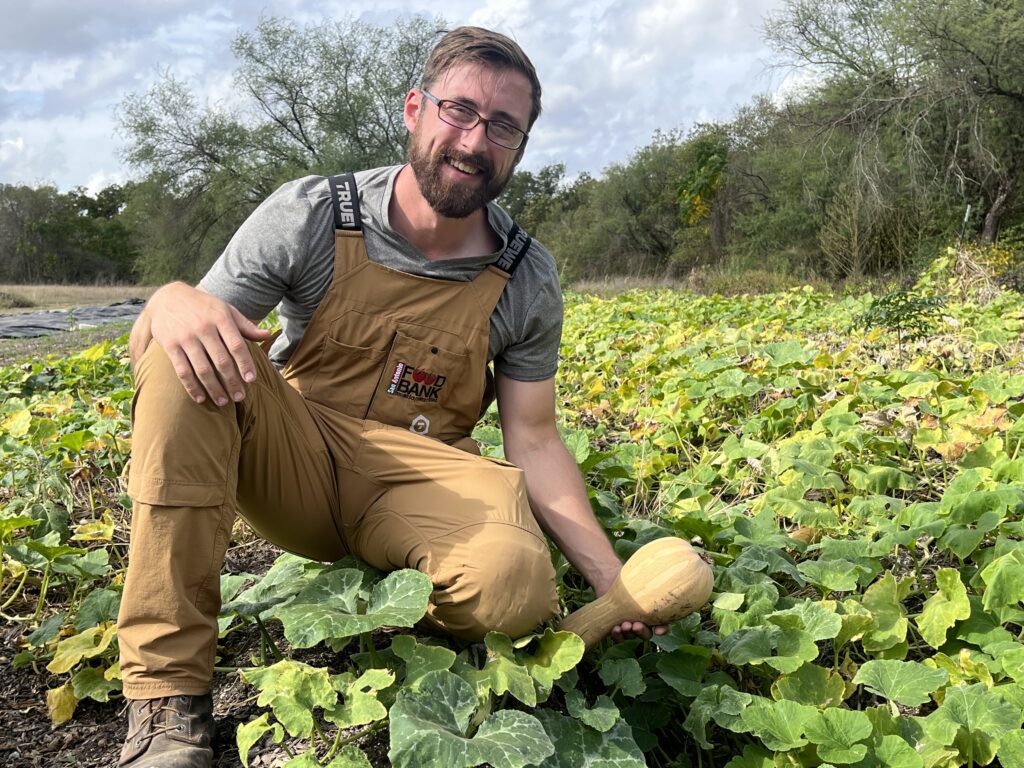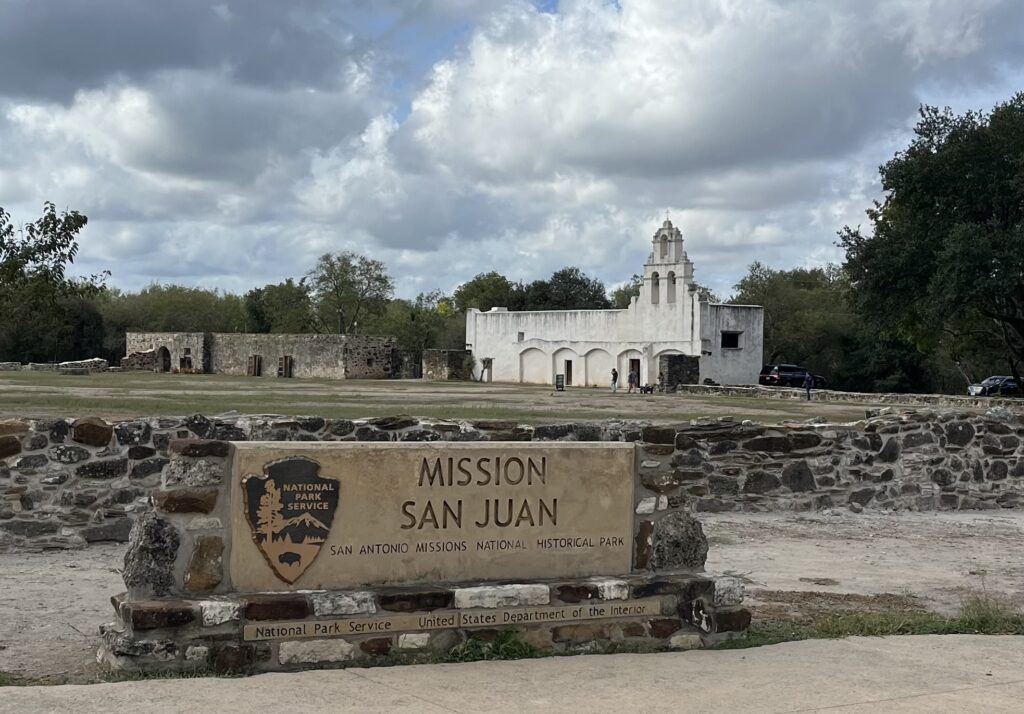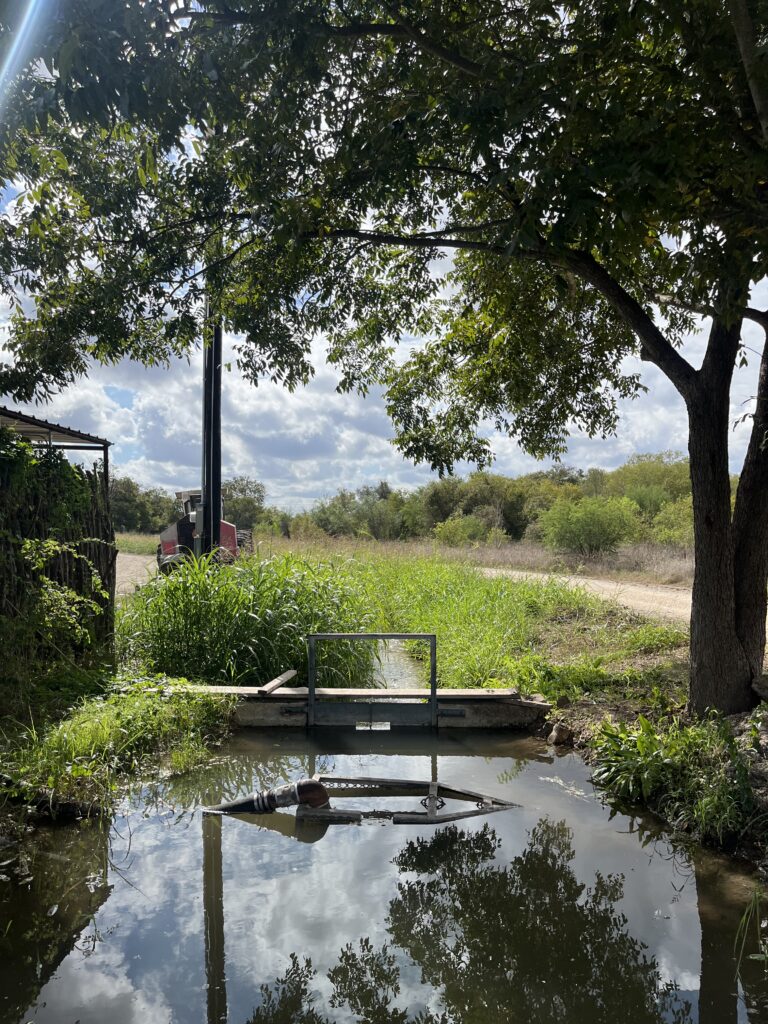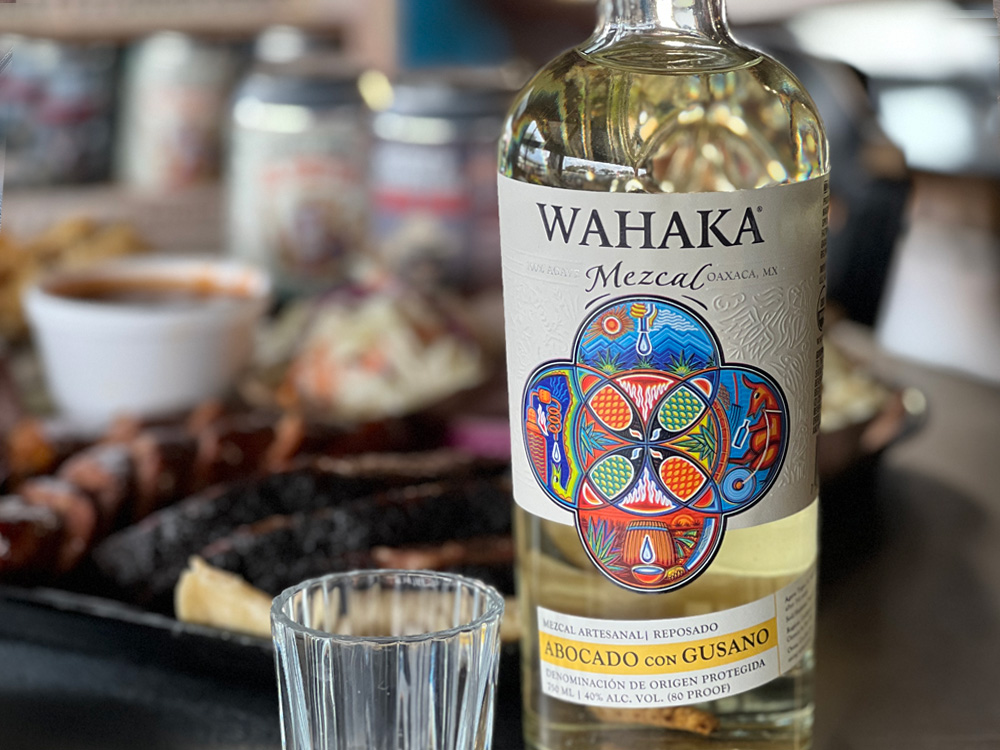WORDS AND PHOTOS BY KIMBERLY SUTA

Mitch Hagney at Mission Farm
If you live in San Antonio, you probably already know of the feats and accomplishments of our San Antonio Food Bank and the monumental efforts they make to feed families in need in our community. They currently distribute over 80 million pounds of food each year, but what you may not know is a small but integral portion of that — hundreds of thousands of pounds of food — is grown and harvested on the Southside, on historical land owned by the San Antonio Missions National Historical Park.
In 2018, a land-use agreement was struck between the SA Food Bank and the National Park Service regarding the Missions’ farmable land, a total of 50 acres. The intent was and is to cultivate the land in order to help feed people.
The San Antonio Missions National Historical Park is made up of four Spanish colonial missions established over 300 years ago. Mission San Juan is one of them — and while it may not feature the most impressive church building, compared to some of the others, it has something extraordinarily fascinating: an ancient acequia that runs throughout the entire property. An acequia is a manmade channel that uses gravity flow to transport water from, in this case, the San Antonio River (once called the Yanaguana River) to the farm lands.

San Juan Mission
“It’s the exact same acequia that was used almost 300 years ago by the mission folks — the Indigenous community and colonists,” explains Mitch Hagney, the new director of food sustainability. Hagney is not only helping to re-envision the existing 25-acre garden at the Food Bank facility, but is also putting a significant amount of time and resources into the farm at Mission San Juan.
According to Hagney, the written history of the missions does not clarify exactly which Indigenous populations lived and used the acequia at the time, but said they were often referred to as the Coahuiltecan people. In an effort to preserve this rich history, part of the property has been designated as a Spanish Colonial Demonstration Farm.
“So for that part of the property, we irrigate using the historical method. We use sluice gates to control the flow of water, which allows us to flood the fields where we’re demonstrating the Spanish Colonial agricultural styles,” says Hagney. “We use more modern techniques like a pump and drip line irrigation on the rest of the property.”
Hagney, who is an experienced proponent for food and land sustainability (he is the owner of Local Sprout and the former president of the San Antonio Food Council), is also planning on bringing some new things to the table, quite literally.
“I want us to demonstrate agriculture that is resilient to climate change in this region. The summer we just had showed us that farming has to change, because our growing conditions are changing. I want to plant more resilient crops like figs and nopal and crops we haven’t grown before, like amaranth, malabar spinach and purslane, that can really handle serious heat and be productive,” he shares.

Mission Farm
This past summer, they grew squash, beans, corn, herbs, eggplant and melons, while this past fall they grew radishes, turnips, beets, broccoli, cauliflower, collards and cabbage, offering SA Food Bank patrons produce that is locally- grown without any synthetic pesticides or herbicides, which is better for food health as well as soil health.
“I think it tastes better if it’s fresher,” says Hagney. “Plus, there’s more nutrient content in fresher vegetables. When it comes to lettuce, for example, as soon as you harvest it, it starts to decrease in nutrient value.”
One of the challenges Hagney and the SA Food Bank team face is educating the community on how to use ingredients, like amaranth, that aren’t already part of their diet. With a staff that also includes 15 nutritionists, they hope to provide exciting opportunities for people to learn how to cook these unique ingredients and incorporate them into their everyday dishes.
“I really want to grow nopal, which was an important ingredient in the diet of the Indigenous people here but it’s fallen out of fashion, so it will be a challenge to integrate it back into our diet. It has a compound called mucilage that can help regulate blood sugar naturally, and I can grow nopal through the worst summer ever because it’s a cactus,” Hagney says.

Another project Hagney intends to focus on is enhancing their meat-processing facility, which is currently only being used to process venison for their Hunters for the Hungry program.
If you’re wondering, like I was, if folks enjoy the venison, not to mention access to a beautiful bounty of the freshest, local produce grown on historic land, the answer is a resounding yes.
“I think we’ve reached a moment in food culture in general where people want to eat locally grown, sustainable, healthy crops and food And they’re really excited to come out to the farm,” says Hagney.
Chief Sustainability Officer, Michael G. Guerra agreed, adding, “As an organization focused on food, we believe it is extremely important to build awareness and engagement around our complex food systems An easy starting point into Hagney’s efforts is helping our community understand farming in South Texas. We farm to feed, for sure, that’s core to our mission, but we also farm to raise the consciousness of our city on the origin of food and the value of eating local, fresh fruits and vegetables.”
If you’re itching to get your hands in the dirt, connect with nature and help feed our San Antonio community at the same time, the SA Food Bank is always looking for volunteers, particularly for harvesting and tree planting events. Visit the website (safoodbank.org) and look for the “Give Help” tab to sign up. The farm itself also has a newsletter so you can stay up-to-date on their progress and needs.
To learn more, visit safoodbank.org






